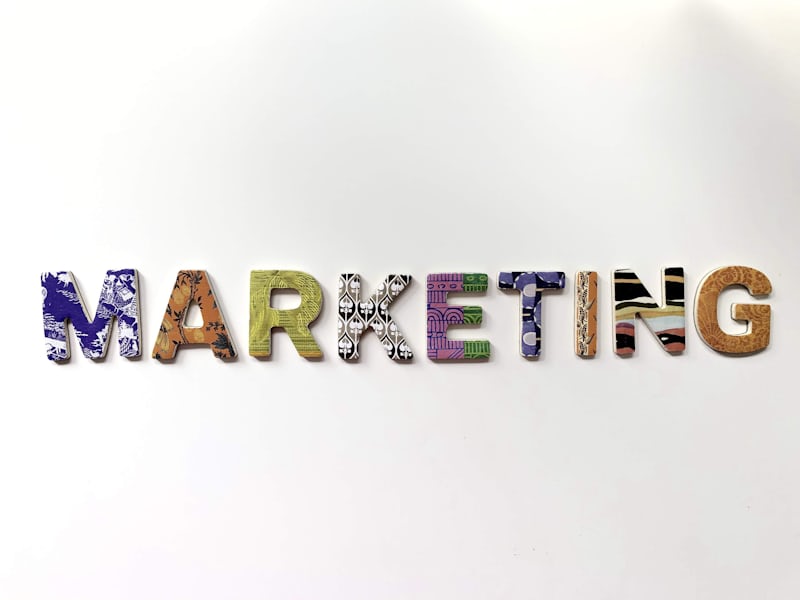How Steve Jobs got inspired by Nike Marketing Campaign

One of the most renowned sports companies in the world will be the topic of our discussion today. The tale I’m about to share with you today concerns a company that not only serves as an example for individuals like you and me but also for a legendary figure like Steve Jobs.
In 1996, when Steve Jobs returned, people. Due to its 11 continuous years of failure, Apple was crippled by losses and on the verge of bankruptcy. The largest obstacle Steve Jobs faced when he returned to the company during this period was the company’s reputation, which had deteriorated to the point where people had completely lost faith in it, for that reason, he had to perform some sort of magic in order to truly get the business back on track. He launched the “Think Different” campaign at this time, which is now regarded as one of the best marketing campaigns in history.
What Happened Next?
This campaign restored the faith of the average person in Apple and established a strong foundation to the point where it is only because of illustrious initiatives like the “Think Different” ad that Apple is a trillion-dollar corporation today.
In an archived video where Steve Jobs is speaking to his executive and citing Nike as one of his sources of inspiration for the “Think Different” campaign, I discovered what I was looking for when I was digging deep to try and understand what exactly was Steve Jobs thinking while he was designing it. At that point, I began to wonder what exactly was so unique about a business that sold shoes that it could have motivated a legend like Steve Jobs.
Also Read: 4 Economic Concepts Everyone Should Know
Topic
Historical Grandeur of Nike with a Classic Example
As a result, the story takes place during the London Summer Olympics in 2012. And because the Summer Olympics were taking place, every sports brand was keen to sign on as the event’s title sponsor because they understood that doing so would help them generate a lot of revenue. Following the auction, Adidas received the title sponsorship, costing Nike the opportunity to beat off its bitter competitor.

Adidas spent $150 million only to serve as the Olympics’ main sponsor. The first thing that springs to mind whenever we hear a figure like this is what precisely is so exceptional about the title sponsorship that you would spend $150 million only to be connected with the name of the Olympics.
The answer to that may be found in a very straightforward example that is located quite close to our place of residence:
Also Read: Marlboro Marketing Case Study
Vivo’s Title Sponsorship of the IPL.
I was totally startled to see that Vivo would spend Rs 2,200 crores merely to use the term “Vivo IPL.” I then looked at Vivo’s growth in 2018 and 2019 and discovered that in the first quarter of 2018, immediately before the IPL began, the company shipped roughly 2.1 million units, understand? But after the IPL occurred in the exact same quarter in 2019, Vivo shipped 4.5 million handsets a year later.

That is a startling growth of more than 100% in the second-largest mobile market in the world. And for this reason, investing in title sponsorship of any well-attended sporting event is a wise move for any business.
Olympic Sponsorship Battle
The Olympics served as something of a springboard for Adidas to surpass Nike significantly. They specifically met with the Olympics committee to attempt to ensure that they create so strict regulations that not even Nike would be able to compete by genuinely associating their name with the Olympics.

By the way, this also included a list of words that included the words “London Olympics,” “Summer Olympics,” “Olympics,” “2012,” “The rings of the Olympics,” and so on and so forth. The Olympics committee issued a number of strict rules and regulations that have to be followed by every single brand in order for them to in no way associate themselves with the Olympics.
It was made theoretically impossible for any brand to get connected to the Olympics in any way that would compete with Adidas as a brand. So, when all of this was considered, everyone believed that Adidas would suddenly become popular and would continue to dominate the market as it is the Olympics’ title sponsor.
Game Changing Idea by Nike
There was a small twist in the middle, and it turned out that while Adidas had roughly 9,000 tweets linking Adidas to the Olympics, Nike had about 16,000 tweets linking Nike to the Olympics when the real results were released. Not only that, but from the opening ceremony to the closing ceremony, or the entire duration of the Olympics, Nike attracted 57,000 followers to their social media profile while Adidas added roughly 12,000 followers.

The icing on the cake is that a study was carried out in the US asking participants, “Who exactly do you think is the title sponsor of the Olympics?” 37 percent of individuals surveyed believed Nike to be the Olympics’ title sponsor, compared to 21% who believed Adidas to be the event’s sponsor. What does that imply? Numerous millions of people believed that Nike, not Adidas, was the Olympics’ headline sponsor and that is because of Nike Marketing Campaign
But How Did This Happen?
How is it even practically possible for a company to obtain more attention than the actual title sponsor without being the Olympics’ title sponsor, spending $150 million, or even employing the keywords to identify oneself with the Olympics? And this is where Nike’s well-known tactic is put to use. So, the first thing they realized was that there will always be flaws, no matter how complicated the system is.
3 Loopholes in ‘Title Sponsorship Strategy’
- The first flaw they discovered was that athletes were free to wear any shoes they liked, regardless of who the Olympics’ title sponsor was. And for that reason, Nike recruited 400 Olympians to serve as its brand ambassadors, asking them only to don the Nike footwear they had been provided. And Nike entered the market with a unique type of footwear called Volt, giving out yellow-green shoes to players to wear during competitions. Why Are My Shoes Yellow-Green? It’s because that color perfectly contrasted the Olympic running tracks.
- The second flaw they discovered was in the clause that forbade Nike from featuring London, United Kingdom, in its advertisements. But guess what? The problem with this is that, in addition to London in the UK, there are 28 other places in the world with the same name. Nike, therefore, filmed their commercials anywhere else besides London, UK. The London Hotel, the London Gym, Little London in Jamaica, the London Road, and all of these locations served as the backdrops for the ads. And quite cleverly, Nike managed to legally include the word “London” in all of its advertisements.
- The third point is crucial, and this is also the sweet spot. Normally, if you watch these Nike and Adidas advertisements, you will see all the famous people praising the company, but when it comes to Nike, they were not allowed to employ Olympians for the Olympics. As a result, Nike opted to use regular teens as brand ambassadors whereas Adidas was actually flaunting all of its advertisements by recruiting all of these Olympians.
While Adidas had Olympians Nike hired average teenagers who were not known to anybody as ambassadors to endorse its brand. came out with a beautiful masterpiece that literally, literally broke the Internet.
Also Read: Gillette’s Marketing Strategy
Our Observation
Now, if you paid close attention to that advertisement, you must have seen that Coca-Cola used the feeling of happiness to convey its message. Nike uses inspiration as a tool to express its message. In both situations, the brands are attempting to force you to watch their advertisement. You can notice that Nike doesn’t want to talk about Usain Bolt if you examine the advertisement for the brand even more thoroughly. They want to discuss the Usain Bolt spirit that resides within each and every person, including you and me. And if you are someone who constantly pushes yourself to improve yourself, then the Nike commercial is essentially telling your own tale.
Because it connected with local champions, Nike was able to trend, and a week after the Olympics began, it had 4.5 million views and was trending at the top of YouTube. Comparatively speaking, Adidas had only 2.9 million views and was ranked third.
That is how Nike managed to overtake Adidas in this marketing battle without being the title sponsor, without shelling out $150 million, and without actually utilizing the forbidden terms.

Key Lessons
Three crucial lessons can be drawn from the entire case study.
- Are you aware that people would still remember Nike even if the Olympics had taken place without Nike releasing its “Find Your Greatness” commercial? Despite all odds, Nike made the extra effort to create a stunning advertisement in order to beat Adidas. This is because Nike, as a company, understands that the only thing separating the ordinary from the remarkable is that little bit extra. In this instance, it’s Nike’s efforts to defy all odds and become a legend.
- The Nike commercial is a great example of this saying, which states that while people may forget what you said, they will never ever forget how you made them feel. So, if you accept a task, simply make sure it’s exceptional. Since 99 percent of people in our world are good, only 1 percent is great, and they are only great because they choose to be great. Today, every single champion is aware that while doing well is necessary, being great is always and forever a decision.
- According to the legend, “Somehow we have come to believe that greatness is meant only for a chosen few that greatness is only meant for the superstar but the truth is- greatness is for everyone”. The goal is to raise the bar for every one of us instead of lowering it since greatness can be found anywhere someone is looking for it, not just in one unique person or location.
Therefore, my dear mate, I ask you: What are you doing to discover your greatness?
THANKS FOR READING




